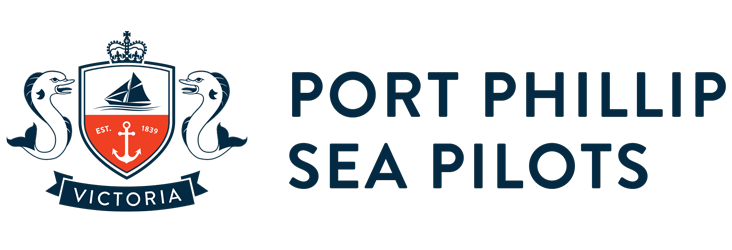Navigate our waters with the latest PORT INFORMATION.
20+ LICENSED PILOTS
480+ YEARS COMBINED EXPERIENCE
Victoria’s ports are the gateways to Australia’s second largest state economy, which in 2018-19 accounted for 23.67% of the national total despite representing only 3% of the landmass.
PPSP’s pilots have hundreds of years of combined experience of handling vessels in these ports, applying the highest professional standards to ensure safe and efficient transit of ships, goods and the people they carry.
Port of Melbourne
Licensed pilots: 24
The settlement known as Melbourne was founded in 1835 by John Batman, who arrived from Tasmania in the vessel Rebecca. Later that year John Pascoe Fawkner, in the schooner Enterprize, moored in the River Yarra at the head of Port Phillip Bay and unloaded two cows, two calves and two horses; four years later the banks of the Yarra were the site of makeshift wharves and the port was functioning.
Today Melbourne is Australasia’s busiest container port and the world’s 59th largest. It has the greatest share of the nation’s automotive trade and also handles dry and liquid bulk and breakbulk, as well as the vital Bass Strait freight and passenger trade with the island state of Tasmania, and cruise shipping.
LINKS
Passage Planning
Pilot Boarding Ground
located: 5.0’ x SW of Lonsdale Lt House.
GPS Posn: 38° 21.2’S 144° 32.6’E
Pre-Arrival Communications
24 hrs – Advise ETA and deepest draft via email
4 hrs – Advise ETA via email
2 hrs – Call “Lonsdale VTS” for arrival information, VHF Ch: 12
1 hr – Call “Port Phillip Sea Pilots” for pilot boarding instructions, VHF Ch: 09
Arrival Preparations
• Anchors cleared and ready for use
• Engine room on stand-by
• Steering systems tested
• Navigation equipment and aids operational
• Any defects communicated to agent
• Monitor VHF Ch: 12 & 09
Port of Geelong
Licensed pilots: 24
The Port of Geelong is Victoria’s second largest port and Australia’s sixth largest port by tonnage. Located on the western shore of Port Phillip, Geelong was proclaimed as a (post-European settlement) township in 1838, two years after the first recorded visit to Corio Bay by the small vessel Francis Freeling. In the late 1830s and early 1840s jetties, a breakwater and other simple port infrastructure was built.
Today Geelong is Victoria’s premier bulk port and regional gateway and comprises 15 berths across two primary precincts, Corio Quay and Lascelles. The Victorian Regional Channels Authority (VRCA) is responsible for channel management and commercial navigation of commercial waters in and around Geelong.
LINKS
Passage Planning
Pilot Boarding Ground
located: 5.0’ x SW of Lonsdale Lt House.
GPS Posn: 38° 21.2’S 144° 32.6’E
Pre-Arrival Communications
24 hrs – Advise ETA and deepest draft via email
4 hrs – Advise ETA via email
2 hrs – Call “Lonsdale VTS” for arrival information, VHF Ch: 12
1 hr – Call “Port Phillip Sea Pilots” for pilot boarding instructions, VHF Ch: 09
Arrival Preparations
• Anchors cleared and ready for use
• Engine room on stand-by
• Steering systems tested
• Navigation equipment and aids operational
• Any defects communicated to agent
• Monitor VHF Ch: 12 & 09
Port of Hastings
Licensed pilots: 24
The Port of Hastings, located on the northern shores of Western Port Bay, was originally known as Kings Creek and was renamed in around 1860. The first jetty was built in 1865 although it is thought the area had been active in trade from the early part of the century.
The port’s fortunes have waxed and waned with those of the principal industries it serves, liquid bulk and steel products, and it remains an identified future deepwater alternative when the port of Melbourne reaches capacity.
The channels in Western Port are within the control of the Victorian Regional Channels Authority.
LINKS
Passage Planning
Pilot Boarding Ground
located: 3.5’ x S of West Head
GPS Posn: 38° 32.8’S 145° 01.8’E
Pre-Arrival Communications
24 hrs – Advise ETA and deepest draft via email
4 hrs – Advise ETA via email
1 hr – Call “Port of Hastings” for pilot boarding instructions, VHF Ch: 14
Arrival Preparations
• Anchors cleared and ready for use
• Engine room on stand-by
• Steering systems tested
• Navigation equipment and aids operational
• Any defects communicated to agent
• Monitor VHF Ch: 14 & 16
Port of Portland
Licensed pilots: 4
Combined Experience: 20+ yrs
Port Phillip Sea Pilots provides a back-up pilotage service for the Port of Portland.
The Port of Portland is a deepwater bulk port and the international gateway for the ‘green triangle’ region of south-western Victoria and south-eastern South Australia, as well as the Wimmera-Mallee and Murray Basin.
Lieutenant James Grant sailed Lady Nelson into what he named Portland Bay in 1800 and it was subsequently used by sealers and whalers to shelter from wild Bass Strait weather. But it was not until 1834 that the first European settlement was established, by illegal squatters.
Today Portland handles 45% of Victoria’s bulk commodities, particularly agricultural, forestry and mining products as well as aluminium and fertiliser, over six berths.
LINKS
Passage Planning
Pilot boarding time to be advised by agent
Pre-Arrival Communications
1 hr – Call “Portland Port Control” for pilot boarding instructions, VHF Ch: 12, 16
Pilot Boarding Ground
Located: 2.2’ x NE of Main Breakwater (QR) Lt.
Arrival Preparations
• Anchors cleared and ready for use
• Engine room on stand-by
• Steering systems tested
• Navigation equipment and aids operational
• Any defects communicated to agent
• Monitor VHF Ch: 12 & 16
Port of Corner Inlet
Licensed pilots: 4
Combined Experience: 20+ yrs
The Port of Corner Inlet and Port Albert is the largest water area of the five Gippsland Ports. The port encompasses the waters adjacent to Wilson’s Promontory in the vicinity of Rabbit Island through to McLoughlins Beach at the western end of Ninety Mile Beach. The port can be accessed by several entrances, with the main channel being into Corner Inlet. The port waters include Barry Beach, Port Welshpool, Port Albert and Port Franklin.
The port acts as a pickup and delivery base for several small cargo vessels that operate between Tasmania and the Gippsland region, utilising the roll-on/roll-off facility and the Marginal Wharf at Port Welshpool.
The port also encompasses the Port Anthony Marine Terminal and the Barry Beach Marine Terminal.
ExxonMobil Australia manages the Barry Beach Marine Terminal and is responsible for securing vessels alongside and other stevedoring requirements. The port principally services offshore oil and gas installations in Bass Strait.
Port Anthony Marine Terminal Stage 1 is a small berth pocket has been dredged adjacent to the berth for limited vessel operations.
Gippsland Ports is the port manager for the Port of Corner Inlet and Port Albert.
LINKS
Passage Planning
For information regarding local knowledge certificates for the port of Corner Inlet and Port Albert, contact Qualifications at Marine Safety Victoria on 03 9655 9787.

